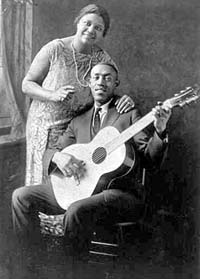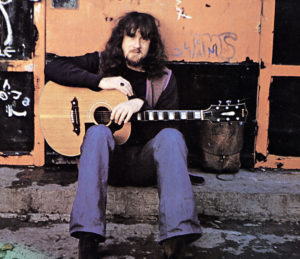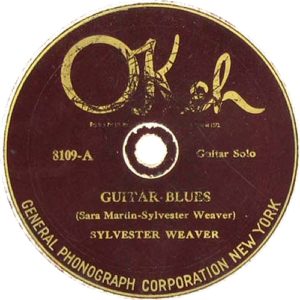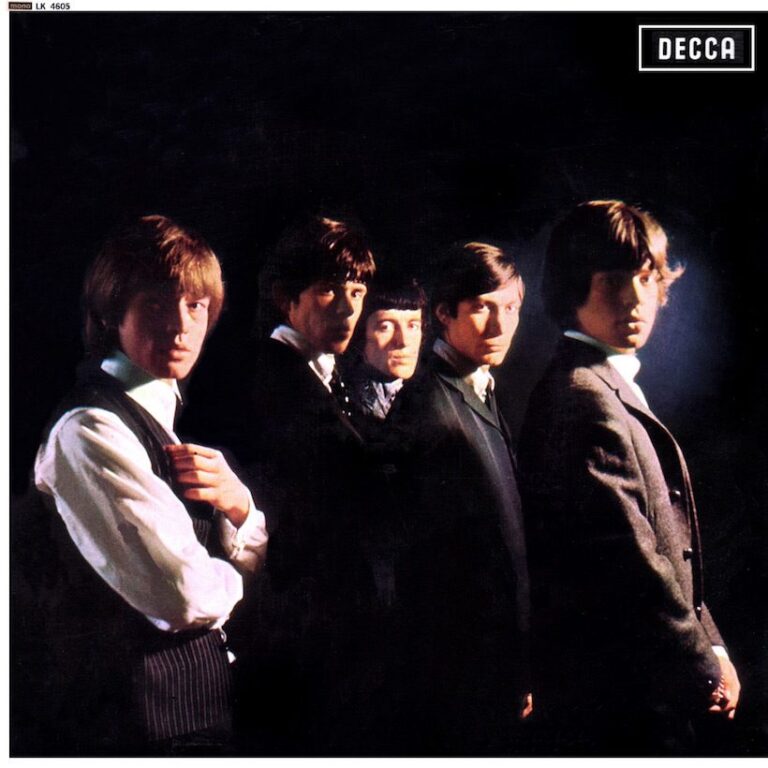How Sebastopol tuning opened the door to open blues tuning

Open tuning. From Russia with love? Or from Liverpool?
If you think blues is purely African American, think again. Influences on the genre come from many countries and many creeds.
Take the first two blues guitar recordings ever made, for example, ‘Guitar Blues’ and ‘Guitar Rag’. These seminal instrumentals were recorded in New York in 1923 by a 26-year old African-American jug-band musician from Kentucky called Sylvester Weaver.

According to the former editor of America’s Guitar Player magazine, Jas Obrecht, Weaver’s bluesy Guitar Rag was played, “with gusto in Vastopol tuning”.
Just how ‘Vastopal’ tuning arrived in America I’ll leave to blues experts far more knowledgeable than me. The notable English finger-style guitarist John Renbourn, once of the famous folk-rock band Pentangle, offered Jas Obrecht the following theory in 1992.
The term Vastopol, Renbourn speculated, evolved from two open guitar pieces by the English-born composer Henry Worrall, born in Liverpool in 1825. Copyrighted in Ohio in 1860, Worrall’s tunes were ‘Sebastopol’ in open D tuning and ‘Worrall’s Original Spanish Fandango’ in open G.

“It seems clear,” explained Renbourn to Obrecht, “that these pieces lent their names to the folk terms ‘Spanish’ for open-G tuning and Vastopol for open-D or E tuning. But these connections are not limited to the tunings, they go on in terms of harmonic contect and even specific right-hand patterns.”
Sebastopol, the Black Sea port in Ukraine, of course, later changed its spelling to Sevastopol. Pentangle founder, John Renbourn died last year in 2015. But to read more about the Englishman’s fascinating theory, check out this Jas Obrecht post on blues origins here:
http://jasobrecht.com/blues-origins-spanish-fandango-and-sebastopol/
However, two equally formidable blues historians have a different, much earlier theory.
Writing in the UK’s The Jazz Review of November 1959, Alexis Korner, the blues guitarist often described as ‘The Father of British Blues’, quoted the eminent English authority on the blues, Paul Oliver:
“The D Tuning is often referred to as ‘Vastopol’ Tuning. This is a corruption of Sebastopol and, we are told, comes from the balakaika tuning brought to New Orleans by Russian émigrés in the early part of the 19th century.”

Other sources say ‘Vastopol’ tuning was brought to New Orleans by Russian sailors. Which school of thought is right who is to say? In those days, of course, the Ukraine was part of Russia.
But enough of blues minutiae and back to Sylvester Weaver. He was discovered by blues diva Sarah Martin, a singer from Lousville, Kentucky, playing in a Louisville jug band. As their record label, OKeh, put it in a press advertisement back in 1923:
“Sara Martin discovered the clever idea of making recordings with a guitar accompaniment, and the first records of this kind put out have made remarkable impressions in all parts of the country. Sylvester Weaver plays his guitar in a highly original manner, which consists chiefly of sliding a knife up and down the strings while he picks with the other hand. His guitar solos, No. 8109, are having wide sales.”
Weaver recorded his solo tracks a month after accompanying Sarah Martin on ‘Longing for Daddy Blues’. Recorded in New York, the record was a milestone in blues recording for two other important reasons. This was the first time any singer of any genre had been backed solely by a guitarist; and also the first ever recording of an acoustic guitarist playing blues.

Weaver’s solo tracks, recorded soon after his Sara Martin recordings, also have the distinction of being the very first unaccompanied recording by a black artist; and the first to feature bottleneck guitar playing.
Listen now to Guitar Blues, one of the earliest recordings of the blues guitar, on the link below.
http://www.youtube.com/watch?v=j00yl_EJUGQ&feature=kp
Now, here’s Sylvester Weaver with Guitar Rag, a song that was covered as Steel Guitar Rag by Bob Wills and the Texas Playboys in the 1930s. No credit was ever given to Sylvester, unfortunately.






Fantastic and fascinating stuff, a great read and great resource material for any blues fan or student.
Thanks for this.
My absolute pleasure, Pete. So glad you liked it.
Ive got to say, the layout alone made me come back to this web site again. But now that Ive check out what youve got to say, Ive got to share it with the world!
Lafuma sale https://missaototustuus.com/lafuma/
Thank you kindly,LS. Greatly appreciate your feedback.
Very nice info. Keep up the work! Thanks
mens barbour jackets outlet http://barbour.hawksportsind.com
Thanks for feedback, MBJO.
You sure do know what youre talking about. Man, this blog is just great! I cant wait to read more of what youve got to say. Im really happy that I came across this when I did because I was really starting to get bored with the whole blogging scene. Youve turned me around, man!
sergio rossi crystal shoes http://sergiorossi.francarrilloguerrero.com
Great stuff. Sergio, many thanks. Positive feedback like yours makes blogging about historic blues and rock worthwhile.
Real good visual appeal on this website , Id value it 10 10.
buy fitflop https://thaismatsura.com/fitflop/
Thanks for giving site top marks, BF. Much appreciated.
You are a very clever person!
ugg store http://ugg.kmmits.com
You’re too kind.